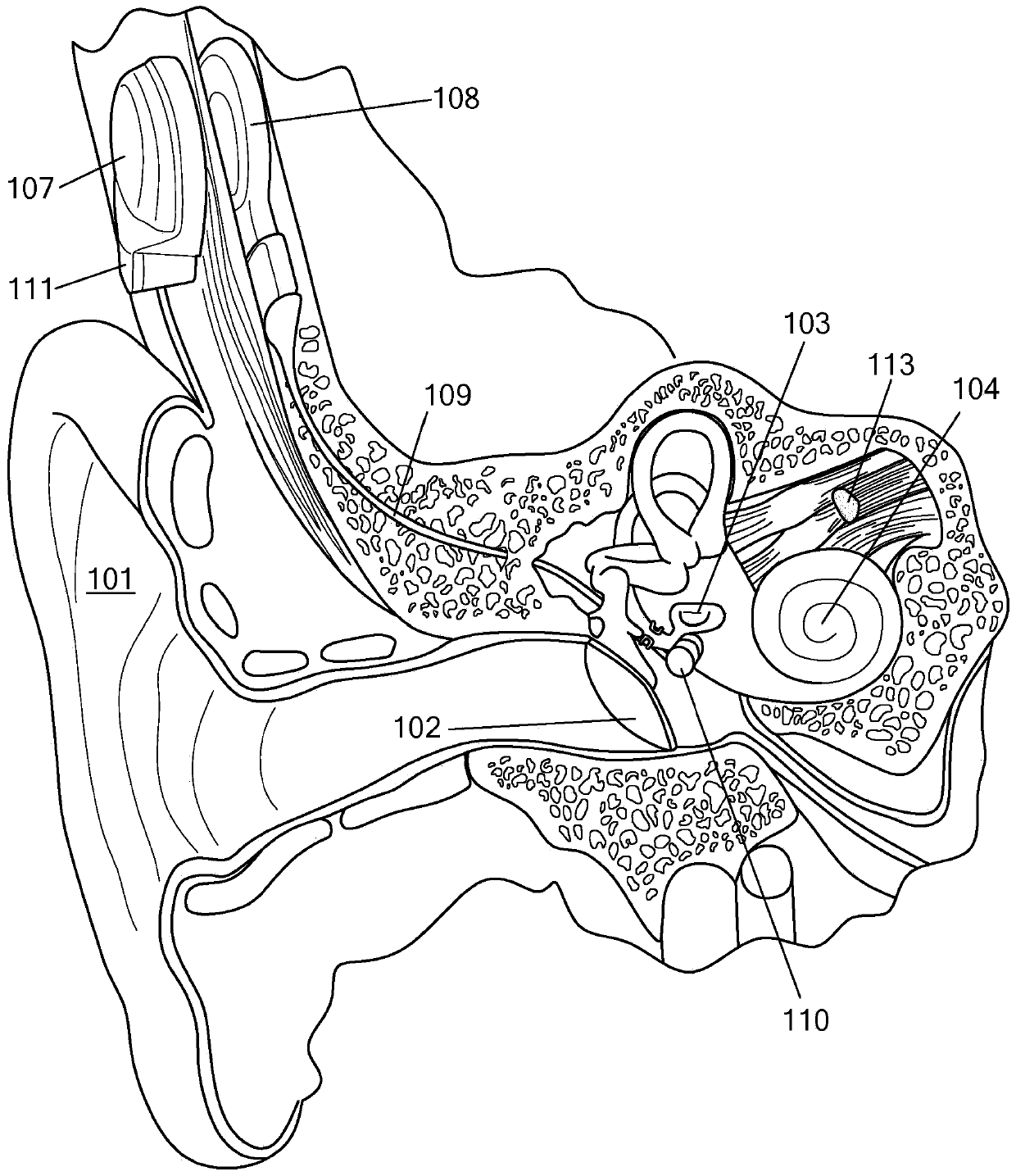Middle ear implant for otosclerosis
A middle ear and cochlear technology, used in ear treatment, electrical components, hearing aids, etc., can solve problems such as non-transmission, conductive hearing loss, and increased risk of infection
- Summary
- Abstract
- Description
- Claims
- Application Information
AI Technical Summary
Problems solved by technology
Method used
Image
Examples
Embodiment Construction
[0022] Various embodiments of the present invention relate to a middle ear implant (MEI) that provides significant hearing improvement to patients with otosclerosis with an ossified oval window membrane. Figure 4-B shows a functional representation of a human cochlea 200 having an ossified oval window membrane 401 with an 402 engages an offset mechanical transducer 404 . A mechanical transducer 404 such as a floating mass transducer (FMT) is surgically implanted at an angle in a fixed position in the round window niche 403 of the patient's cochlea 200 adjacent to the round window membrane 402 .
[0023] The drive face 406 on the outer surface of the transducer 404 has a diameter that is less than half the diameter of the round window membrane 402 . The drive face 406 may, for example, be a flat surface or a surface of spherical cross-section (eg, a spherical tip as in Lupo). The fixed position of the transducer 404 engages the drive surface 406 relative to the side section o...
PUM
 Login to View More
Login to View More Abstract
Description
Claims
Application Information
 Login to View More
Login to View More - R&D
- Intellectual Property
- Life Sciences
- Materials
- Tech Scout
- Unparalleled Data Quality
- Higher Quality Content
- 60% Fewer Hallucinations
Browse by: Latest US Patents, China's latest patents, Technical Efficacy Thesaurus, Application Domain, Technology Topic, Popular Technical Reports.
© 2025 PatSnap. All rights reserved.Legal|Privacy policy|Modern Slavery Act Transparency Statement|Sitemap|About US| Contact US: help@patsnap.com



